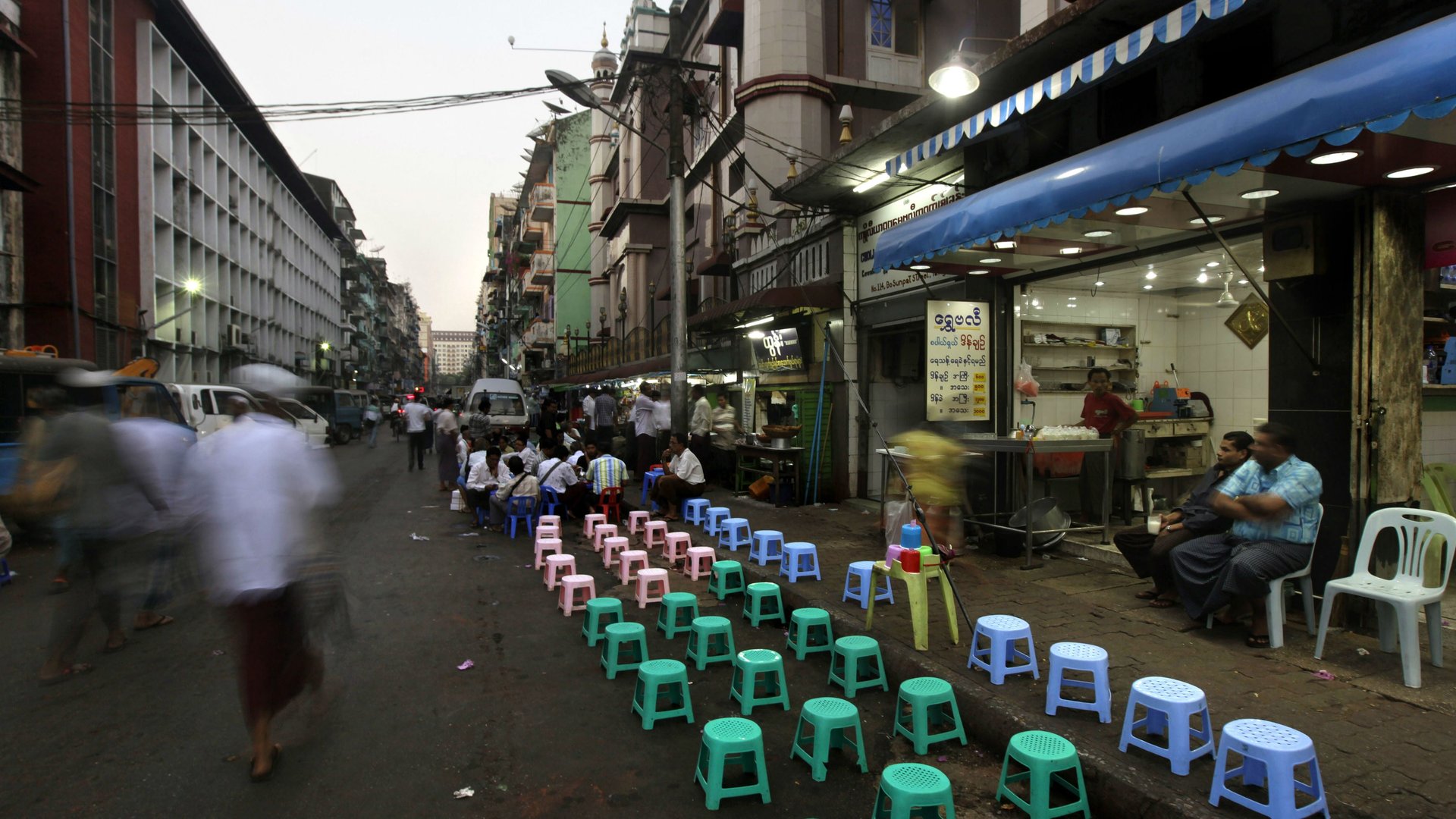Going rogue: What's up for grabs in US economic ties with Myanmar
Myanmar, a country the US once considered a “rogue state,” is getting less rogueish by the month. The US announced on September 26 that it will lift a ban on Burmese imports, having decided in July to allow investment in the country. What could that lead to? Here’s a quick primer on the potential for the US-Myanmar economic relationship.


Myanmar, a country the US once considered a “rogue state,” is getting less rogueish by the month. The US announced on September 26 that it will lift a ban on Burmese imports, having decided in July to allow investment in the country. What could that lead to? Here’s a quick primer on the potential for the US-Myanmar economic relationship.
Made in Myanmar
With its huge swathes of available land for agriculture, Myanmar has a chance of becoming a major rice exporter once again, and the government has made reforms in hopes of regaining the country’s title as the “rice bowl of Asia.” But the US is running a rice surplus (paywall) of its own and Myanmar will have to compete with Vietnam and Thailand, who are the current top rice producers.
One area for hope is Myanmar’s nascent garment industry which exports to other Asian countries as well as Europe. In 2011, Burma exported $770 million worth in apparel to Japan, Germany, South Korea and other European countries. A labor shortage in China, as well as rising rages, has pushed some manufacturers to move clothing production to cheaper southeast countries like Laos, Cambodia or Vietnam. Myanmar, with a labor force of 33 million, could be next.
Why go to Myanmar?
GDP is growing at 6% and accelerating. President Thein Sein’s pledge to triple Myanmar’s GDP by 2016 has raised investors’ eyebrows (the Asian Development Bank predicts that it will take until 2030, and that’s assuming the government sticks to reforms) but also set their mouths to watering.
However the country is still one of the most expensive places to start a business in the world and there is a distinct lack of needed infrastructure and legal structure to govern economic activity. More worrying, Vikram Nehru of the Carnegie Endowment for International Peace noted in a recent piece, actions by the government tend to be “as distortionary as they are unpredictable.” The country’s finances are also cause for caution. The Asian Development Bank predicts that inflation will rise to 6.2% (pdf, p.4) in 2012. The country also has a high public debt level, at 47.6% of GDP in 2010, a concern the International Monetary Fund has noted.
Instability is an issue in some parts of the country. Fighting between Rohingya Muslims and Buddhists in Burma’s western state of Rakhine has displaced an estimated 90,000 people. Inequality could be another problem with 25% of the population living under the poverty line.
What will the neighbors think?
Myanmar has long been a close ally of China and the two countries’ economic relationship has only gotten closer. As Myanmar improves ties with the United States and reduces its dependency on China, the Asian powerhouse may feel threatened. Myanmar’s most important trait is its energy resources—namely oil, gas, and timber, all of which China needs to fuel its growth.
Myanmar also gives China access to the Indian Ocean and thus a shortcut for oil deliveries from the Middle East. When it comes to investment in the country, American companies may find themselves competing with Chinese ones for oil and gas contracts.
Did the sanctions work?
The US began its sanctions program on Myanmar after the violent suppression of popular protests by the government in 1988 and continued as military rule continued. After a series of important political and economic reforms in 2011 and 2012 and sweeping parliamentary wins for democracy activist Aung San Suu Kyi’s party, President Barack Obama has said the country deserves recognition and support.
But human-rights activists say the United States lost leverage by agreeing to lift sanctions before the country had resolved various human-rights issues. Rights groups say Myanmar’s military continues to commit abuses against citizens such as forced labor, extrajudicial killings and sexual violence. Over 1,200 political prisoners remain in detention (pdf, p.27), according to a 2012 report by the US Congressional Research Service.